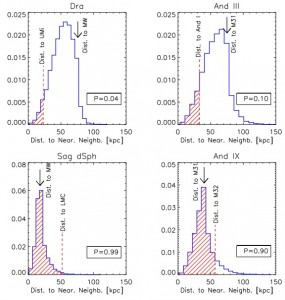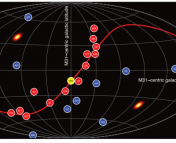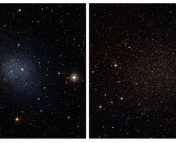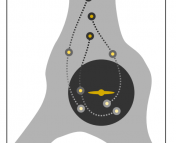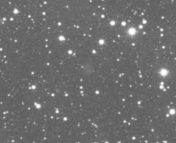- Title: Galaxy Pairs in the Local Group
- Authors: Azadeh Fattahi, Julio F. Navarro, Else Starkenburg, Christopher R. Barber, Alan W. McConnachie
- First Author’s Institution: Department of Physics and Astronomy, University of Victoria
In order to answer this question, the authors focus on the Local Group, where 1) the census of satellites is pretty complete, apart from a region which is obscured by Galactic dust, 2) magnitudes, positions, distances and line-of-sight velocities can be accurately measured for most galaxies, and 3) it is known that at least some of the satellites of the Milky Way and Andromeda (M31) galaxies are likely to be pairs, in possible disagreement with model predictions.
The authors analyse literature data searching within the Local Group for “physical galaxy pairs“, or pairs in which the two partners are close enough to reside in the same dark matter halo. Then, they compare their findings with N-body/semi-analytic models (taken from the simulations of the Aquarius Project) that match the radial distribution and luminosity function of Local Group satellites. Galaxies are included in the sample only if they are brighter than MV~-8, and located within 300 kpc of the Milky Way or M31. With these criteria, the sample consists of 29 dwarfs, orbiting around either Andromeda or the Milky Way. In order to single out physical pairs, the authors adopt a three-step procedure, which identifies unusually close associations in position, velocity and luminosity space.
First, they compare the distances between galaxies in the observed sample with the probability distribution of distances between galaxies in a statistical sample, obtained by Monte Carlo sampling a random isotropic population of satellites having the same total number and radial distribution. Figure 1 illustrates this comparison for two satellites of the Milky Way (Draco and Sagittarius, on the left), and two of M31 (And III and And IX, on the right). The shaded regions show the probability that a satellite’s nearest neighbour lies, by chance, closer than observed. This probability is also quoted in the plots as the number “P”. When this number is small, as it is the case for the top panels, a physical association is likely. The bottom panels, on the other hand, illustrate two cases where the nearest neighbours are not significantly closer than what is expected if the radial and angular distributions of satellites were uncorrelated. Looking at the Local Group in this way, the authors find that 40% of satellites of the Milky Way and Andromeda galaxies have P<0.2, a result which is expected to happen by chance in fewer than one in 100 random realizations.
Having retained only those satellites which have P<0.2, the authors refine their selection criteria, further excluding those fellows whose velocities differ too much. In particular, the maximum allowed difference in the line-of-sight velocity is set to 75 km/s, motivated by the velocity difference of the Magellanic Clouds, which undoubtly represent a physical pair. Finally, they only consider satellites which have comparable luminosities, allowing for a maximum luminosity difference of 3 magnitudes. The whole procedure selects four physical galaxy pairs; two additional candidate pairs are found, as well as the well-known pairs Magellanic Clouds, and NGC 147/NGC 185.
From this study, the authors conclude that ~30% of galaxies in the Local group likely belong to physical pairs of comparable luminosity. Such a high frequency of pairings among dwarf galaxies is at odds with the expected rarity of dwarf associations in theoretical models of galaxy formation, which instead predict a frequency of order ~4%. If confirmed in studies of larger samples, this significant clustering of dwarf galaxies may provide relevant clues to the theories of galaxy formation and evolution.

